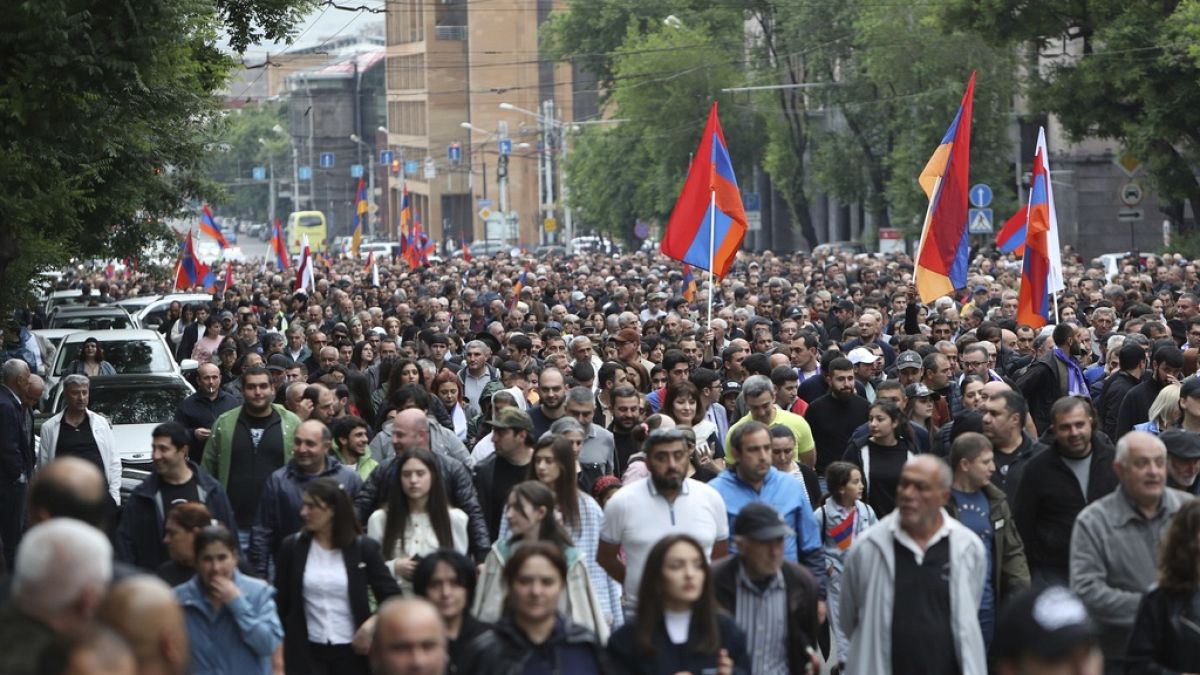Thousands of demonstrators in Armenia have been calling for the resignation of Prime Minister Nikol Pashinyan after his decision to cede control of several border villages to Azerbaijan. The protests, led by Archbishop Bagrat Galstanyan, have been ongoing for weeks, with the movement ‘Tavush For The Homeland’ emerging as a result of the controversial decision made in April. While the villages in Tavush were the initial focus of the movement, it has since expanded to encompass a broader range of grievances against Pashinyan and his government.
The decision to hand over control of the villages in Tavush came after Azerbaijan’s military campaign in September, which resulted in the surrender of ethnic Armenian separatist authorities in the Karabakh region. Azerbaijan took full control of Karabakh, leading to the displacement of nearly all of its ethnic Armenian population. This conflict dates back to 1994 when ethnic Armenian fighters, supported by Armenian forces, gained control of Karabakh after a six-year war. Azerbaijan was able to reclaim some territory in 2020, resulting in an armistice and the deployment of a Russian peacekeeping force.
Prime Minister Pashinyan has stressed the need for Armenia to quickly define its border with Azerbaijan in order to prevent further hostilities. The ongoing protests in Armenia reflect the deep dissatisfaction with Pashinyan’s leadership and the perceived concessions made to Azerbaijan. The movement ‘Tavush For The Homeland’ has become a platform for Armenians to voice their concerns and demand political change.
The demonstrations in Armenia have been fueled by a sense of betrayal and frustration over the loss of territory and the displacement of ethnic Armenians in Karabakh. The peacekeeping force deployed by Russia has begun withdrawing, raising concerns about the potential for renewed conflict in the region. Pashinyan’s attempts to navigate the complex geopolitical dynamics between Armenia and Azerbaijan have been met with criticism and calls for his resignation from office.
As tensions continue to simmer in Armenia, the calls for Pashinyan’s resignation have grown louder. The protests led by Archbishop Bagrat Galstanyan and the ‘Tavush For The Homeland’ movement highlight the deep divisions within Armenian society over the handling of the conflict with Azerbaijan. The future of Armenia’s relationship with its neighbors and the fate of the displaced ethnic Armenians in Karabakh remain uncertain as the country grapples with political upheaval and social unrest.
In the face of mounting pressure from the protesters, Prime Minister Pashinyan must navigate a delicate balance between addressing the concerns of the Armenian people and maintaining stability in the region. The fallout from the decision to cede control of the border villages to Azerbaijan continues to reverberate through Armenian society, highlighting the complex challenges facing the country in the aftermath of the conflict in Karabakh. As the calls for Pashinyan’s resignation echo through the streets of Armenia, the country stands at a crossroads, with the potential for both political upheaval and renewed conflict looming on the horizon.









